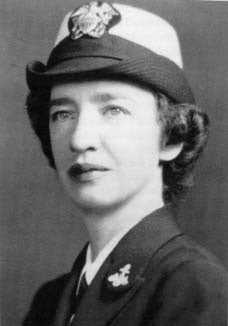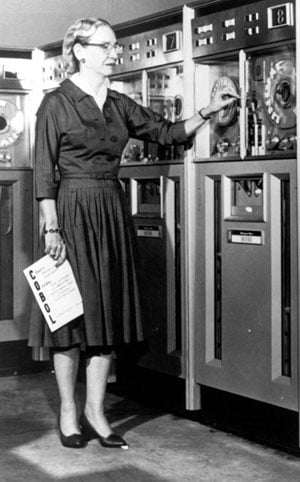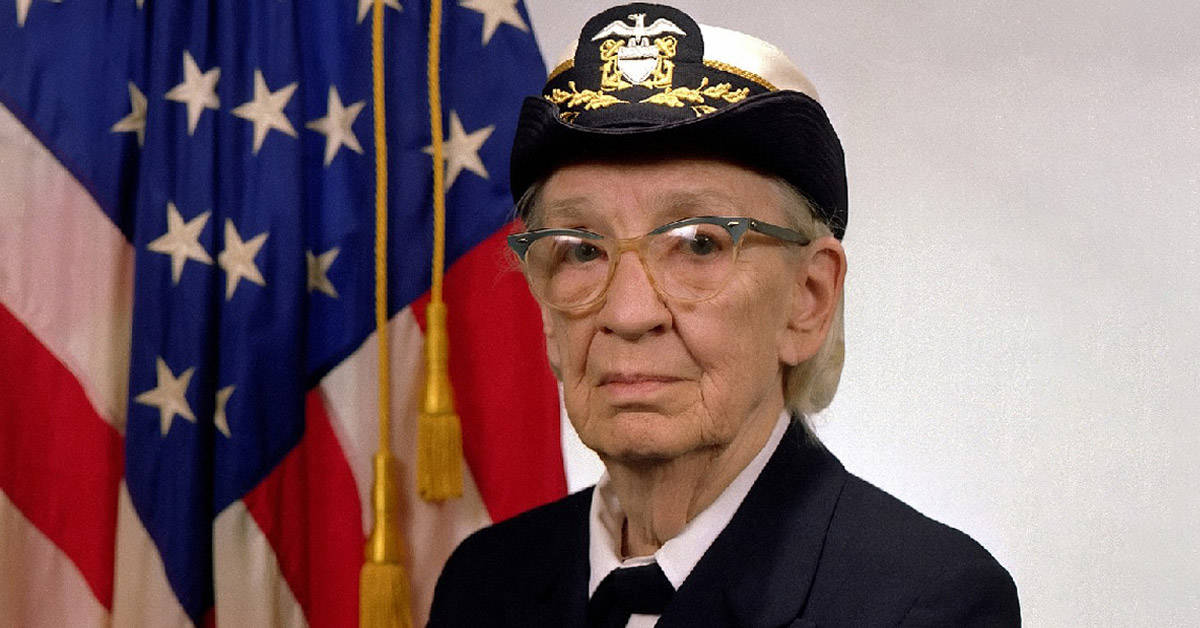
Who Was Grace Hopper?
Grace Hopper was an American computer scientist and U.S Naval Officer, best known for her work on the A-0 compiler (aka A-0 System) and its successors A-1, A-2, A-3 (the first complete ALGOL 60 implementation), A-4, A-5, and A8. She invented one of the first ever personal computers alongside Kay McNulty Mauchly Antonelli in 1944 called The Harvard Mark I Computer. Hopper also created FLOW-MATIC – a business data processing programming language that is still used today by banks and insurance companies.
Quick Facts
- Full Name
- Grace Brewster Murray Hopper
- Birth
- December 9, 1906
- Death
- January 1, 1992
- Net Worth
- Unknown
- Awards
- National Medal of Technology and Innovation
- Presidential Medal of Freedom
- IEEE Emanuel R. Piore Award
- Children
- None
- Nationality
- American
- Place of Birth
- New York
- Fields of Expertise
- [“Mathematics”,”Computer Science”]
- Institutions
- US Navy, Harvard University
- Contributions
- Cobol, A-0 Compiler, Harvard Mark I
Grace Hopper was born Grace Brewster Murray on December 9th, 1906, in New York City, NY, and during her high school years, she taught herself basic algebra despite her gender, which at the time was really not common for girls to do so. A few years later, she enrolled at Vassar College in Poughkeepsie, NY, where she studied mathematics and economics but dropped out of college after two years due to her parent’s death. A year later, she re-enrolled at Yale University in Connecticut, where she graduated summa cum laude with a Bachelor’s degree in Mathematics & Philosophy. She then moved to Harvard University in Cambridge. This is her biography.
Early life
Early in her life, Hopper had already shown an interest in computing, and during her time at university, she worked as an operator of the Mark I Computer Project at Harvard University with Howard H. Aiken, who was a computer scientist and engineer best known for designing the first electromechanical large-scale programmable calculator called the Automatic Sequence Controlled Calculator (ASCC) or Harvard Mark I.
During the years of World War II, Hopper joined the United States Navy Reserve, initially believing that it would only be for a year, but when she realized how much more interesting working on military technology was compared to regular college research, which was what women were allowed to do back, then Hopper continued working on war-related technology until her retirement from the Navy in 1986 with some even calling her “Amazing Grace” for her extensive work towards the Navy and computational technology. This is why her Navy career plays such a prominent role in her biography.
Career
A-0 Compiler & Naval Service
In 1944 Hopper joined Harvard’s Computation Laboratory, where she worked on the Mark I and its successor, the Mark II, with Howard H Aiken, who was an American computer scientist & engineer best known for designing the first electromechanical large-scale programmable calculator called the Automatic Sequence Controlled Calculator (ASCC) or Harvard Mark I as well as working on its successors, such as the Harvard Mark II or IBM SSEC which was a general purpose electro-mechanical digital computer.
During this time period, in 1947, Grace Hopper also completed her master’s degree in Mathematics from Harvard; she then went to teach at Vassar College in Poughkeepsie, NY, for a year before returning to Harvard, this time working as an assistant professor of mathematics.
Hopper continued her academic career and became a Navy officer in 1943, not only because she wanted to help the war effort but also because she hated how women were treated at the time.
She was assigned to work on the Bureau of Ordnance Computation Project (BOCP) at Harvard University, where she worked on applying Mark I technology to solving US navy equations and problems which is what led her to create A-0 or Automatic Computer – Mark I program.
Hopper maintained that creating a programming language that would be simpler than machine code so operators could write programs without having a background in computers was possible due to her extensive knowledge of mathematics.
The Invention of COBOL & A-0 Compiler
She implemented the A-0 compiler manual for the first time in a May 1944 conference; it was an extension of what she had previously developed with Howard H. Aiken, who was a computer scientist and engineer best known for designing the first electromechanical large-scale programmable calculator called the Automatic Sequence Controlled Calculator (ASCC) or Harvard Mark I, which became one of Hopper’s main contributions towards computers as well as software development.
She realized that having operators write programs via machine code would be too tedious, so she proposed creating a “planning device” that would allow programmers to develop programs by combining mathematical equations rather than writing them in numerical code.

Later Years
In 1949 Hopper left Harvard and spent the rest of her career working for naval technology, first as a senior mathematician at the Eckert-Mauchly Computer Corporation, where she developed one of the first compilers called the B-0 compiler, which was designed to translate the English language into computer language for UNIVAC computers.
The following year in 1950, Hopper took an assignment as a programmer and director of Automatic Programming Development at Remington Rand where she oversaw the development of FLOW-MATIC – A formula translation system that could compile mathematical formulas into machine code, so they could be used by business machines; it was also there where she created one of her most famous works called “The First Compiler” or A-OI which converted symbolic mathematical expressions into executable code.
What Did Grace Hopper Invent?
Grace Hopper is credited as the inventor of FLOW-MATIC and A-OI — her most notable accomplishments, both formula translation and automatic programming languages, that played a crucial role in developing early computers for business machines by allowing users to express workflows without having to learn machine language. Her development of the first compiler for a computer programming language made it possible to use English words instead of numbers and symbols, making machine-assisted computing more accessible.
One of her most important contributions came with the invention of the compactification technique in 1952. The technique allowed computers to store data in memory using fewer bits by exploiting redundancy (similarities) among large files, which gained prominence when combined with another innovation: paging or dividing memory into equal segments that could each be accessed independently (and randomly).
Later known as random-access memory (RAM), the concept provided a much faster way to access stored information than previously available methods—the size of an individual segment grew larger over time—which led to its widespread adoption by computer manufacturers.
The linker, an essential tool in any programming language, is also said to be a creation of Hopper. Early computers were able to store and process data but lacked the ability to link pieces together (hence linking). A linker is needed to minimize the size of an executable program and includes functions that call library routines, remove dead code, resolve external references, or merge sections of code.
Historical facts state that Hopper had a knack for programming languages and is credited with coining the popular term “bug” (her preferred description of flaws in computer hardware, instead of Dr. Thomas Edison’s technical term “glitch”) after finding and fixing a moth inside a Mark II computer at Harvard University. Because early computers were so complex, users made frequent errors back when they were not yet called a bug.
The development of assembly language eventually led to the creation of compilers like Hopper’s A-OI compiler, which translated business language into machine language in order to run programs on a computer when its operating system was unavailable. The bug was born.
Another Hopper invention claimed to be the first “inconsistency detector.” Considered a critical element of operating systems and compilers, inconsistency detectors are used to test compiler-generated code for errors. The tool was reportedly capable of finding problems in programs that even programmers couldn’t find.
A New Age In Computing
Hopper’s accomplishments in computing helped to usher in the computer age and allowed digital data processing to replace manual computing. The resulting technological advances have transformed many aspects of daily life, including health care and medicine, transportation and commerce, entertainment, and communication.
Hopper also used her experience to influence naval technology by suggesting processes that could improve shipboard efficiencies. Her pioneering spirit led her to apply new approaches (and languages) early in her career, which not only enabled advancements but opened opportunities for others.
As much as she was motivated by a desire to see things done better than before, she fostered an environment where people from diverse backgrounds could thrive while pursuing their passions with support from mentors who provided guidance and opportunities.
Grace Hopper’s ‘Amazing’ Legacy
In 1966, Grace Hopper joined the Data Systems Lab at Digital Equipment Corporation as a senior scientist, where she invented the FLOW-MATIC programming language and then later went to teach at Vassar College in Poughkeepsie for a year before returning to Harvard, this time working at an assistant professor of mathematics.
In 1967 Hopper attended a conference on software engineering where she proposed creating common business languages that would simplify writing programs, as well as help prevent errors; this idea became known as Common Business Oriented Language (COBOL). Hopper continued to pursue her love for technology by making other contributions to it during her lifetime, including teaching computer science at Yale University and co-inventing the A-O compiler.
In 1983, Hopper retired from the Naval Reserve with more than 60 years of service and turned to research speech recognition systems; she was awarded her first patent for this in 1986. She continued inventing until she died on January 1st, 1992, of pneumonia at age 85.
The facts would argue that Hopper’s legacy and accomplishments are felt today because of her efforts in promoting a number of ideas, such as common business language that still see use today, creating an environment where people from diverse backgrounds could thrive while pursuing their passions with support from mentors who provided guidance and opportunities (including women) which led to advancements that were shared among many fields outside of just computing, and her own personal contributions towards the development of computer technology.
Grace Hopper: Marriage and Personal Life
The facts would have it that an important aspect of Hopper’s biography is her personal life, which is as notable as her professional achievements. She was married to Vincent Foster Hopper for 44.
She was the fourth child, with two brothers and one sister, born to Walter Fletcher Murray and Mary Campbell Van Horne Murray; her father was a lawyer. Hopper never used her first name in public or private life as an adult after she left college.
Grace Hopper never married or had children but adopted one of her nieces and cared for her until the niece’s death. She said that having a family would have been incompatible with her naval career and many years living abroad.
Hopper spent most of her life in New York City, moving only once when she moved to Washington, DC, in 1983. She was an avid reader (her favorite writer was Proust) and kept up with world events by reading three newspapers daily.
Grace Hopper: Awards and Achievements
- Hopper was awarded the Department of Defense Distinguished Public Service Award in 1980 for her work concerning COBOL
- In 1983 she received the National Medal of Technology.
- In 1985 Hopper was awarded the Navy Meritorious Civilian Service Award.
- In 1986, she received the IEEE Computer Pioneer Award, along with Seymour Cray. She also received the Achievement Award from NSA.
- In 1987, she was inducted into IEEE Intelligent Systems’ AI Hall of Fame.
- On September 15, 1990, President George H. W. Bush presented Hopper with a Special Lifetime Presidential Certificate of Appreciation for her innovative contributions to military preparedness, commercial computing, and national security.
The United States Navy guided-missile destroyer USS Hopper (DDG-70) is named in her honor. The ship’s motto is “Fearless and Fair.” On June 23, 1994, she received the National Medal of Technology from President Bill Clinton.
She was also awarded a Lifetime Achievement Award by the Computer History Museum at its inaugural Gala on November 13, 1998. The Naval Historical Center credits Grace Hopper with proposing that standard colors for the various background/foreground states in computer screens be set aside for use with interactive programs, making her one of the most accomplished female programmers of all time.
Grace Hopper: Published Works and Books
Hopper published two books: The Education of a Computer (1984) and Computers and People: A Reflection (1991). She also contributed to the book A History of Programming Languages.
Grace Hopper Quotes
- “A ship in port is safe, but that’s not what ships are built for.”
- “It is often easier to ask for forgiveness than to ask for permission.”
- “You don’t manage people; you manage things. You lead people.”
NEXT UP…
- Xerox Notetaker Guide: History, Origin, and More
- Simon Personal Communicator: A Complete Guide
- Meet Angela Ruiz Robles – Complete Biography, History, and Inventions
The image featured at the top of this post is ©James S. Davis, Public domain, via Wikimedia Commons.







